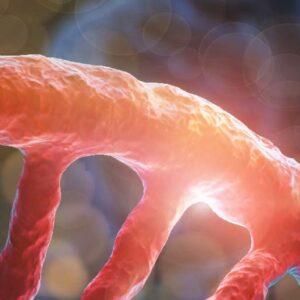Scientific background
Rett syndrome is an X-linked dominant neurodegenerative disorder (frequency 1:10,000) that occurs predominantly in females. In the classic course, children lose previously acquired abilities including meaningful hand movements, speech, and social interaction at between 6 and 18 months of age after initially inconspicuous development. A main symptom is the development of stereotypical hand movements. Other symptoms include delayed growth, microcephaly, gait ataxia, episodes of apnea or hyperpnea, sleep disturbances, progressive scoliosis, and seizures. The few affected males predominantly present with severe neonatal encephalopathy.
The disorder is caused by pathogenic variants in the MECP2 gene that encodes a protein involved in the regulation of gene expression by methylation. The severity of the disorder is influenced by the pattern of X inactivation and the type of variant. Most pathogenic variants arise de novo resulting in a low risk of recurrence. In rare cases, the pathogenic variant is already present in combination with a non-random X-inactivation in the clinically inconspicuous mother, so that a diagnosis can be made in the mother of an affected child. Since germ cell mosaics have been observed in isolated cases, prenatal diagnosis may also be appropriate in the absence of maternal variant detection. Pathogenic variants in the CDKL5 gene have been found in a few patients with a non-classical form of Rett syndrome with early-onset seizures (Rett syndrome, atypical).
Atypical Rett syndrome was first described in 1985 in a girl with benign neonatal seizures (BNS) and later a disease with a very similar clinical course to classical Rett syndrome. To date, patients have been mainly characterized by an early-onset therapy-resistant epilepsy and, in later stages, by severe psychomotor developmental delay. In addition to BNS, other seizure types may occur. The EEG is not typical but depends on age and the seizure type. Unlike Rett syndrome, there is no initial phase of seemingly normal development.
The diagnostic criteria according to Artuso et al. (2010) are:
- inconspicuous prenatal development
- irritability, vigilance disturbances, and sucking difficulties in the postnatal period before the onset of the first epileptic seizures
- early childhood epilepsy with onset between the first week and the fifth month of life
- stereotypical hand movements
- severe psychomotor developmental delay
- severe hypotonia
Since 2005, it has been known that variants in the CDKL5 gene (Xp22) are causative for this X-linked dominant atypical Rett syndrome. The CDKL5 gene encodes the cyclin dependent kinase-like 5 protein, which, together with the methyl CpG binding protein 2 (MECP2), plays an important role in the regulation of gene expression by methylation. Pathogenic variants in the CDKL5 gene lead to misregulation of gene expression in several genes. Furthermore, pathogenic variants in the FOXG1 gene have also been identified in female and male patients with a congenital variant of Rett syndrome and also in patients with symptoms of classical Rett syndrome (without a pathogenic MECP2 variant). The clinical presentation in patients with pathogenic FOXG1 variants is variable and associated with severe developmental delay among other symptoms. Genotype-phenotype studies have shown that severe microcephaly (-4 to -6 standard deviations) is always present in this group of patients.
The FOXG1 gene product is a transcriptional repressor expressed in neural precursor cells of developing neuroepithelium. Based on data collected to date, it can be predicted that FOXG1 haploinsufficiency leads to microcephaly and a thin cortex with abnormal cortical architecture resulting in cognitive and developmental deficits.
References
Gold et al. 2018, ACS Chem Neurosci 9:167 / Leonard et al. 2017, Nat Rev Neurol 13: 37 / Temudo et al. 2011, Brain Dev 33:69 / Psoni et al. 2010, Pediatr Res 67:551 / Saunders et al. 2009, Am J Med Genet A 149A:1019 / Hite et al. 2009, Biochem Cell Biol 87:219 / Ghosh et al. 2008, J Biol Chem 283:20523 / Williamson et Christodoulou 2006, Eur J Hum Genet 14:896 / Bienvenu et Chelly 2006, Nat Rev Genet 7:415, Erratum in: 7:583 (2006) / Weaving et al. 2006, Clin Genet 69:1 / Wan et al. 1999, Am J Hum Genet 65:1520 / Rett 1966, Wien Med Wschr, 116:723





















